'Smart Snacks' in schools should meet federal Dietary Guidelines
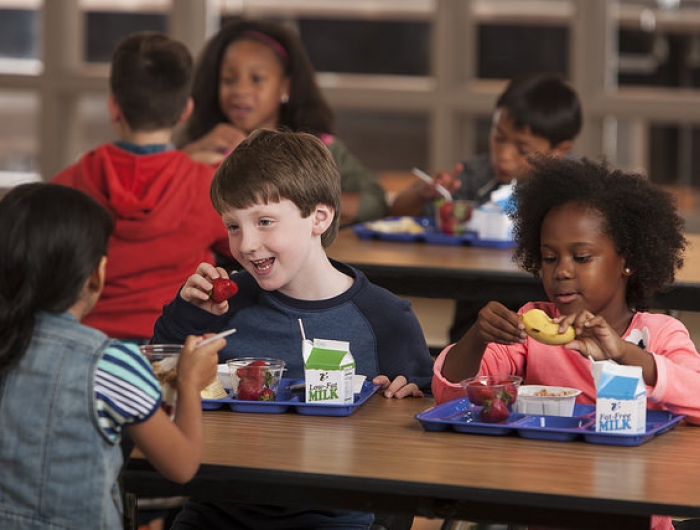
USDA.
Foods and beverages sold à la carte in school cafeterias and vending machines—called “competitive foods”—should be aligned with the federal Dietary Guidelines for Americans. Here’s what a survey of Smart Snacks, more than 600 products available for sale in K–12 schools, reveals about misaligned nutrition standards for children.
Competitive foods: Snacks sold in schools should be healthier
Today, CSPI has released our 2023 Competitive Foods in Schools Report. This report builds on the 2021 School Meals Corporate Report Card and assesses the nutritional quality of Smart Snacks—the single-serve, individually packaged foods and beverages that qualify to be sold as competitive foods in K–12 schools.
Competitive foods are the snacks, entrées, and beverages that students may purchase at school; they compete with the federally reimbursable school meal programs, which are an essential source of nutrient-dense foods for 30 million children annually. These “extra” or alternative meal and snack items—which can sometimes be purchased in line at the cafeteria, or in vending machines inside schools—fall under a category called Smart Snacks, which must meet standards set by the USDA.
Smart Snacks should meet USDA’s Dietary Guidelines
The USDA’s regulations should protect children from adverse health outcomes, but the current Smart Snacks standards are not sufficient. For one, Smart Snacks standards are not aligned with the recommendations for added sugars in the most recent Dietary Guidelines for Americans; most children consume more added sugars than the DGA recommends, and excessive intake of foods or beverages high in added sugars is associated with tooth decay and weight gain among children, which may increase risk for cardiovascular disease. Additionally, Smart Snacks standards ignore compelling scientific evidence on the harms posed by certain low-calorie sweeteners—like aspartame, acesulfame potassium, saccharin, and sucralose, which all show cancer-causing results in laboratory tests—and synthetic food dyes, which can cause adverse neurobehavioral symptoms in some children.
The school food environment plays an important role in shaping dietary behaviors; eating habits established in childhood tend to persist into adulthood, and setting strong nutrition standards for competitive foods ensures that the healthy choice is the easy choice at school. Providing healthier school snacks—and removing less healthy options—can make that happen.
Food fails (and a few wins): CSPI’s findings
For CSPI’s report, we analyzed 623 single-serve, individually packaged, Smart Snacks-compliant K–12 products from 22 of the largest food and beverage manufacturers to determine whether they would meet science-based standards for added sugars, low-calorie sweeteners of concern, and synthetic dyes. “The good news is that about half of the competitive foods we found marketed to schools are already compliant with strong, science-based standards for added sugars, low-calorie sweeteners, and synthetic dyes,” said CSPI child nutrition campaign manager Meghan Maroney. “But the USDA needs to update its Smart Snack nutrition standards so that the foods available to school kids are aligned with the Dietary Guidelines for Americans.”
Overall, 334 of the 623 (54 percent) products assessed in this report are already compliant with strong science-based standards for added sugars, low-calorie sweeteners, and synthetic dyes. There are some serious issues—and a few surprises—in the remaining 46 percent of Smart Snacks.
Added sugars
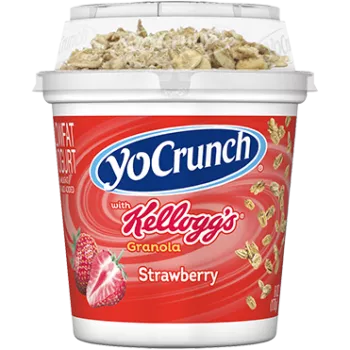
To align the added sugars limit to the DGA, snacks could contain up to 5 grams per serving, and entrees would cap at 9 g of added sugars. We found that half of all the snacks (157 of 315) in our sample were compliant with the 5 g limit, and all the entrées were compliant with the 9 g limit. Although many snacks (158 of 315) had more than 5 g of added sugar and would need to be reformulated to comply with our proposed limit, there were multiple products in every snack category that were under the limit. The most surprising finds from our added sugars survey:
Danone North America’s YoCrunch Lowfat Yogurt Strawberry with Kellogg’s Granola—a seemingly smart choice that contains a good amount of protein, with a bit of fruit and some healthy grains—contains more added sugars (17 g) than YoCrunch Lowfat Yogurt with Oreo (16 g). Both are too sugary and should not be sold in schools unless reformulated.
The snack item with the most added sugars per serving? Sweetened dried cranberries, with 21 g per 1.16 oz.
Hawaiian Punch Fruit Juicy Red is considered a “flavored juice drink.” One 12 fl oz can contains 15 g of added sugars—more than the whole-grain version of chocolate-chip Rice Krispies Treats (14 g) approved for sale in schools. On top of all that sugar, Hawaiian Punch also contains sucralose, a sweetener CSPI rates “Avoid,” especially for children, as well as two synthetic food dyes, which we do not believe children should ingest because of their tendency to cause hyperactivity and other behavioral concerns in some sensitive children.
Non-nutritive sweeteners of concern
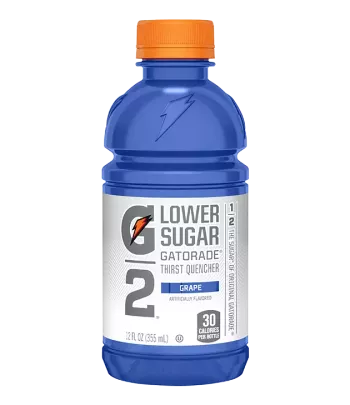
Not all sweeteners are created equal. There are some—aspartame, acesulfame potassium, saccharin, and sucralose—that we urge consumers to avoid for various reasons, mostly related to increased risks of various cancers and endocrine disruption. We especially feel that children should not consume any artificial sweeteners. But to cut added sugars, manufacturers are adding several artificial sweeteners to foods sold directly to children.
More than one-third of beverages (107 of 303, or 35 percent) in the Smart Snacks for sale in high schools contained at least one of these harmful low-calorie sweeteners.
Gatorade’s school-approved G2 Thirst Quencher contains two sweeteners of concern (sucralose and acesulfame potassium), and 7 g of added sugars; the Grape flavor also contains two synthetic food dyes (Red 40 and Blue 1).
Standout products in the beverages category? Flavored seltzers. For example, Coca-Cola’s AHA Blueberry Pomegranate sparkling water contains no sugar, no sweeteners, no synthetic food dyes, no sodium, and no caffeine. Similar flavored seltzers from Keurig Dr Pepper's Canada Dry and Schweppes brands are also available to students.
Synthetic food dyes
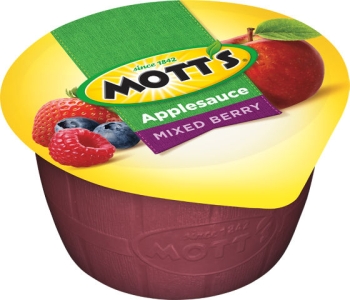
In our assessment, CSPI found that 12 percent of Smart Snacks-compliant snacks (37 of 315) and 12 percent of beverages (36 of 303) contained at least one synthetic dye. As with low-calorie sweeteners of concern, we only found synthetic dyes in those beverages allowed to be sold in high schools: diet sodas (23 of 74, or 31 percent), flavored waters (11 of 126, or 9 percent), and fruit drinks (2 of 11 items, or 18 percent). Among snacks, products containing synthetic dyes were in the minority (12 percent of all snacks). We found no products with Red 3, a known carcinogen, but we did find synthetic food colorings hiding in unexpected places:
Mott's Mixed Berry Flavored Applesauce contains Blue 1 and Red 40—an interesting choice, since it already contains three kinds of pureed berries, which are often used as natural food dyes. The Mixed Berry applesauce also contains 12 g of added sugars.
Opaque packaging, like aluminum cans, obscures the color of beverages, so the Red 40 in Smart Snacks-aligned Dr Pepper Zero Sugar Cherry is entirely superfluous.
CSPI’s competitive foods recommendations for USDA
Based on our findings, CSPI recommends that the USDA transition to DGA-aligned gram limits for added sugars: no more than 5 g for snacks, and no more than 9 g for entrées.
For beverages, we urge the USDA to ban the sale of sugar-sweetened beverages in schools. We recommend, however, that the USDA exempt flavored milk from this ban and instead require those items to meet the department’s proposed product-based added sugars limits: no more than 10 g per 8 fl oz, and no more than 15 g per 12 fl oz.
We also recommend that the USDA ban the use of low-calorie sweeteners of concern and synthetic dyes in competitive foods. These bans could stimulate industry innovation and create space for more unsweetened and dye-free products to enter the K–12 market.
We also encourage the department to allow unsweetened, no-calorie flavored water (with no caffeine) to be sold in elementary and middle schools.
We suggest that the USDA require all 100-percent tomato and vegetable juices to be low-sodium.
Finally, we urge the USDA to eliminate the entrée exemption—an existing loophole that allows entrées sold à la carte to be exempt from Smart Snacks standards if offered as part of the school meal programs. The USDA should instead provide training and technical assistance to help prevent food waste.
Read more in our 2023 Competitive Foods in Schools Report.
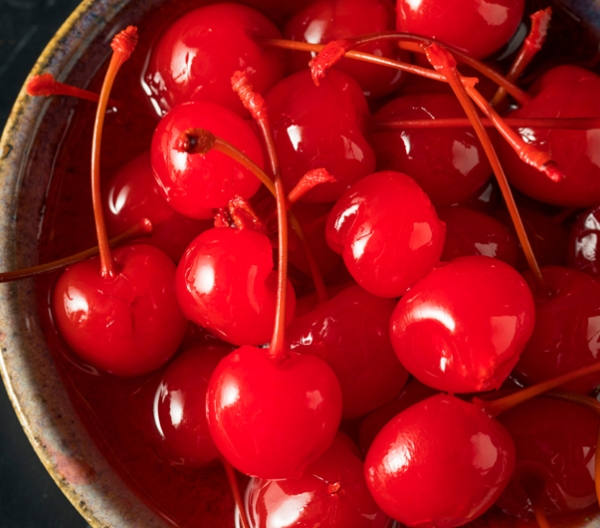
Stirring the Pot
Join the fight for safer, healthier food
Sign up to receive action alerts and opportunities to support our work in Stirring the Pot, our monthly newsletter roundup.

